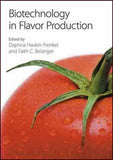The Psychology of Flavour by Stevenson
The Psychology of Flavour
312 pages | 17 line figures | 234x156mm
978-0-19-953935-2 | Hardback |
- The first monograph devoted to this growing area - the psychology of flavour, showing how flavour is a unique example of multisensory integration
- Shows how our growing knowledge of flavour perception has widespread applied uses - in the health sciences, food science, and cuisine
- Demonstrates how flavour interacts with other cognitive functions, such as memory and learning processes
This book describes what is known about the psychology and biology of flavour. Written by an authority in the field, it is divided into two parts. The first explores what we know about the flavour system; including the role of learning and memory in flavour perception and hedonics; the way in which all the senses that contribute to flavour interact, and our ability to perceive flavour as a whole and as a series of parts. The later chapters examine a range of theoretical issues concerning the flavour system. This includes a look at multisensory processing, and the way in which the mind and brain bind information from discrete sensory systems. It also examines the broader implications of studying flavour for societal problems such as obesity. Written in an accessible style, that assumes little prior knowledge of the field, the book will be valuable for psychologists interested in perception, neuroscientists, food scientists, and dieticians.
Readership: Psychologists and neuroscientists interested in the senses, and multisensory integration; food scientists;
1: Introduction
Flavour and its function in omnivores
Themes and organization of the book
The flavour stimulus - food and drink
Oral anatomy, mastication and swallowing
The interoceptive flavour senses - olfaction, gustation and somatosensation
2: Types of flavour interaction
3: Causes of flavour interaction
4: Wholes and parts
Is flavour a unitary experience?
Wholes into parts
5: Flavour hedonics
6: Theory
Functional approach to flavour
Issues arising
7: Implications
Future directions


















